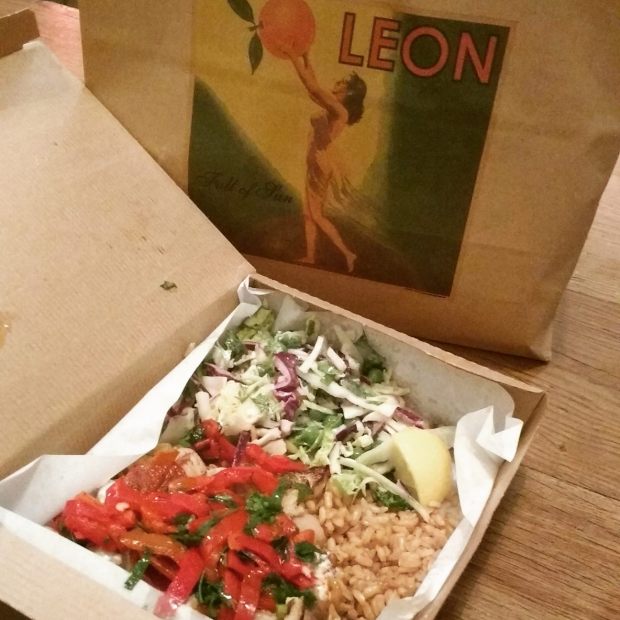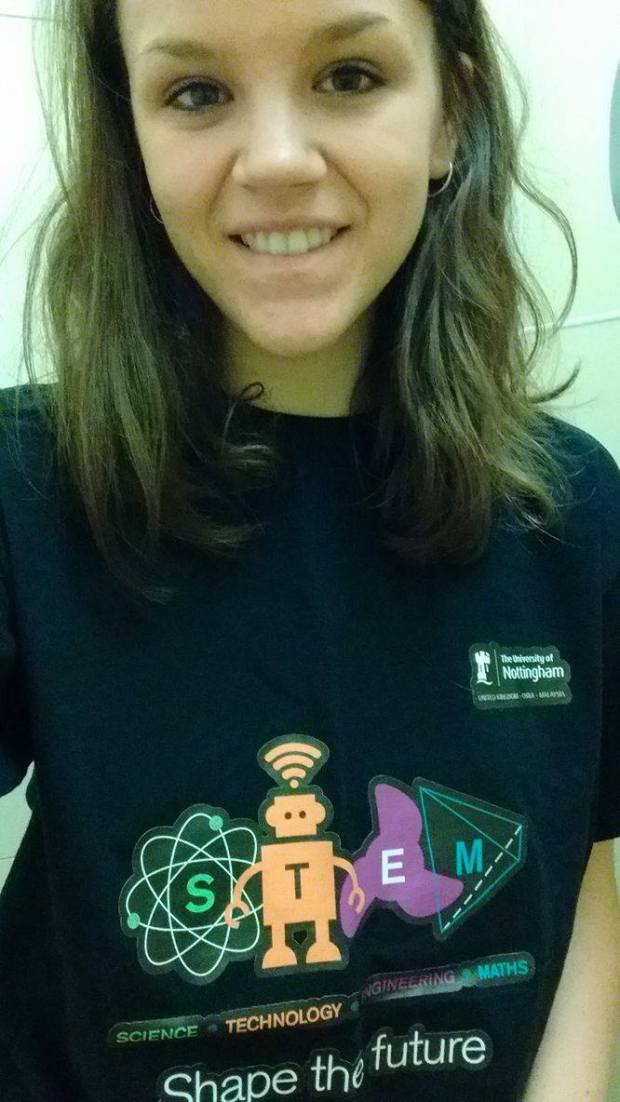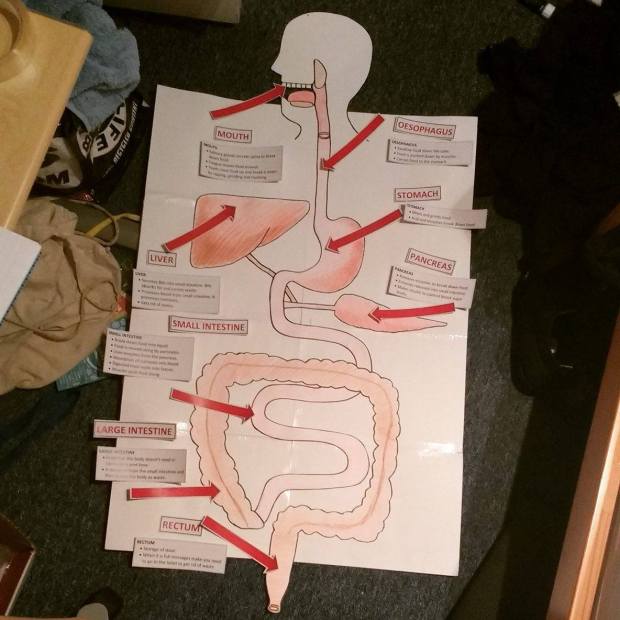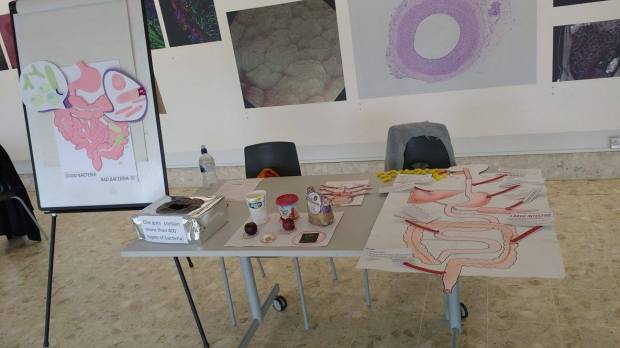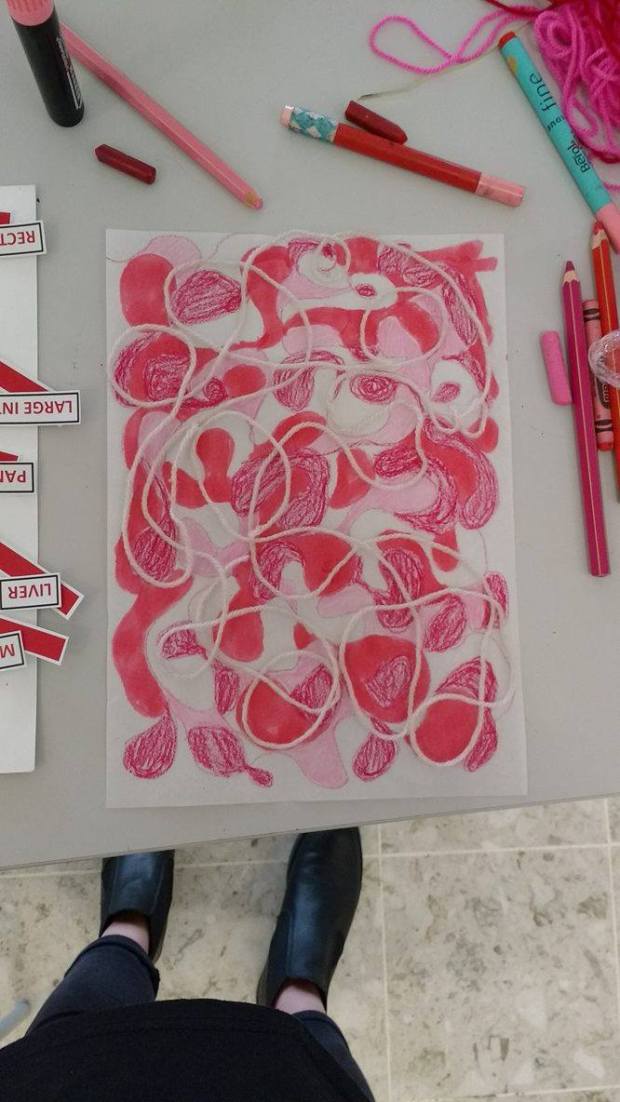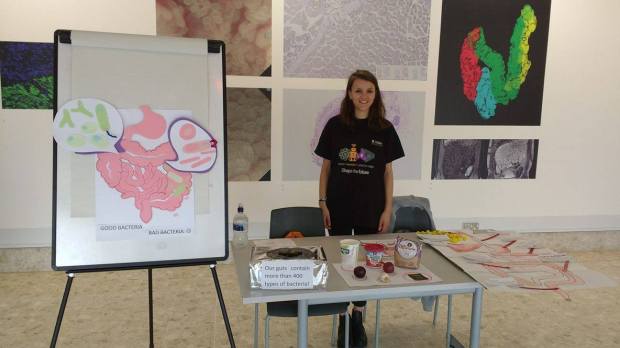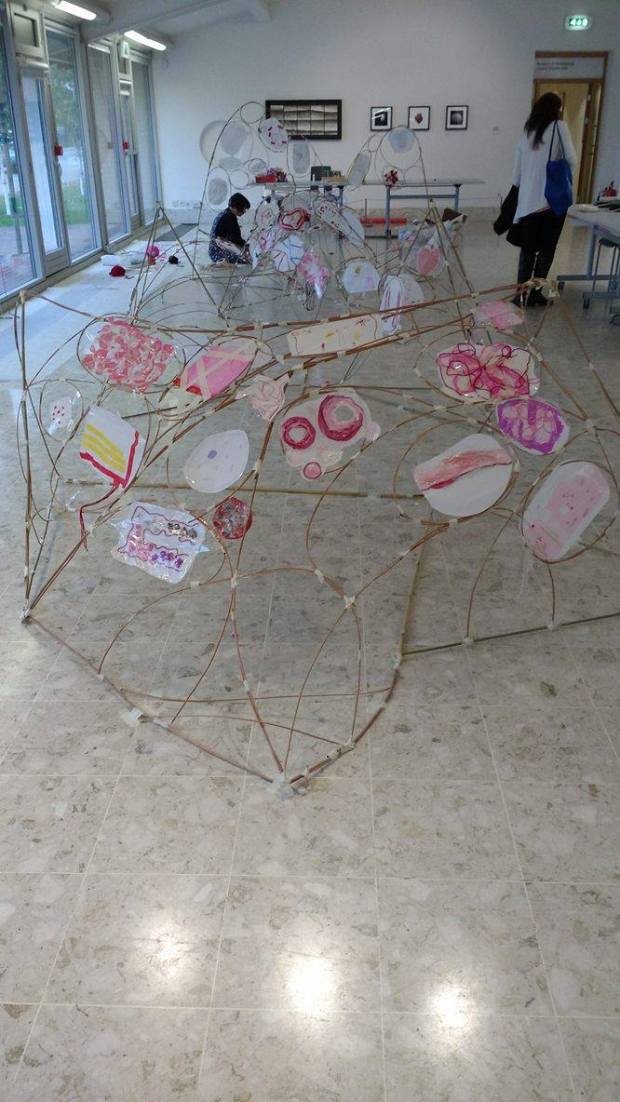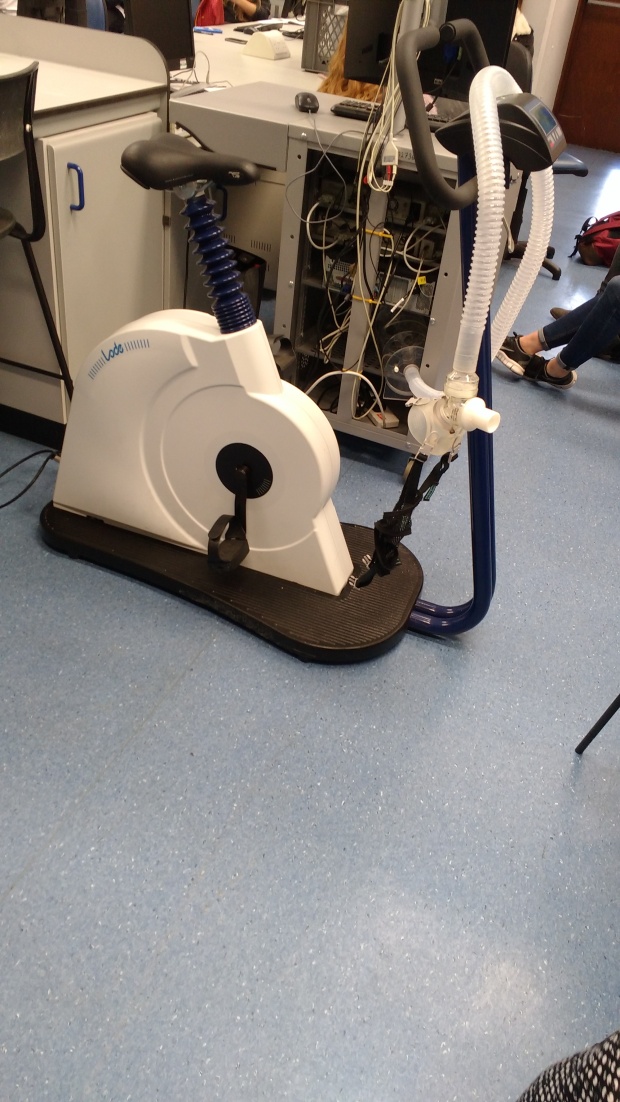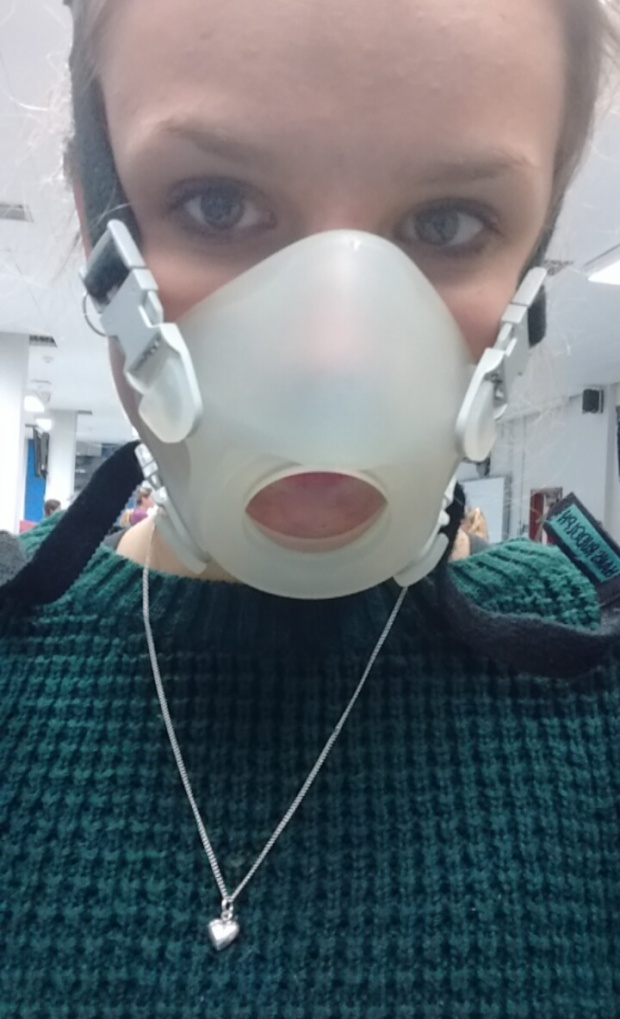Last week I headed on an early train Nottingham to St Pancras for a day at Food Matters Live – a huge UK food and nutrition conference which brings together industry, retailers, government and those working in nutrition for a 3 day event. There is a huge exhibition of organisations including food companies to universities; lots of speakers participating in seminars; plus networking opportunities with the range of visitors from backgrounds including food science manufacturing, R&D, marketing, retail, nutrition and public health. I had been before and I was looking forward to it!
I first went to a seminar session on digestive health: ‘What is next for nutrition and digestive health?’ – a very interesting and relevant area. Dr Glenys Jones, the communications manager at the Association for Nutrition chaired the session and introduced the varied speakers. The first speaker was Eva Hudson, Global Head of Health and Wellness Rseaearch at Euromonitor International – she spoke about market insight and trends for gut health ingredients shaping the digestive health market which I found very interesting (clue – weetabix is the biggest selling digestive health product in the UK!). The second talk was Understanding the FODMAP concept presented by Dr Megan Rossi, She is a Research Associate at Kings College London. Her talk was great and very informative and well explained (it added to my own reading I have been doing on this topic). Professor Bob Rastall, professor of food Biotechnology at The University of Reading presented about the Latest insights into the effect of food and diet on gut microbiome. This involved some complex gut biochemistry pathways! The session was then finished by Dr Gwen Falony, scientist at VIB who explained some population-level analysis of gut microbiome and the studies they have been doing with fecal samples. More detail about the information from the talks to come in my next blog posts!
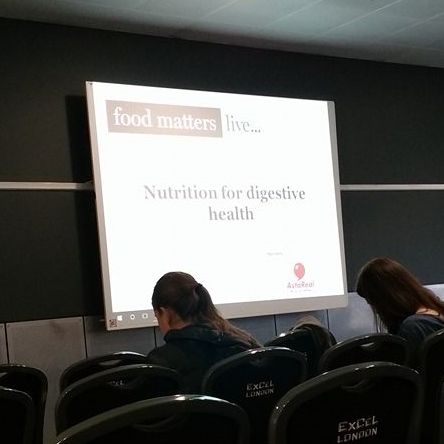
The second session I went to was about early years (an area of nutrition I love – my research project is about maternal nutrition – and a very important one to prevent problems later in life). ‘Maternal and infant nutrition: supporting good nutrition in early years’. This session was chaired by Professor Sarah Redsell, Professor of Public Health at Anglia Ruskin University and she introduced with Identifying obesity risk in infancy: the role of the health visitor. First Kim Roberts the Chief Executive on HENRY (Health, Exercise, Nutrition for the Really Young – what a great charity!) spoke about Making every contact count: working with health professionals to ensure families are given effective nutritional advice. Vicki Watson a specialist Public Health Dietitian from Nottingham City Care Partnership spoke about weaning ways: how to give families the best possible advice and support around complimentary feeding. She spoke about some of the great work that has been put into the communities here in Nottingham! Then the best practice in infant weaning was dicussed. Clare Basely, Registered Nutrition, CLB Nutrition Ltd and Ella’s Kitchen also spoke about weaning and she presented Improving babies’ long term food preferences by weaning with vegetables: a review of the latest evidence. (Use vegetables in weaning!). Katie Fordham (ANutr), the science and innovation senior manager at Danone Nutricia Early Life Nutrition thenexplained taste and texture in infant weaning: How weaning practice impacts on later eating habits. To finish Annie Denny the Nutrition Development Manager at the Early Years Nutrition Partnership spoke about delivering expert food and nutrition practice in early years settings. (A great job that the EYNP do) – Again more details to come in a future blog!
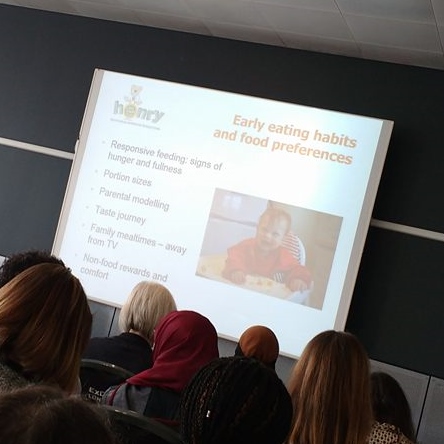
I then took my time walking around the exhibition (and trying many a sample of the products on show!). The exhibitors ranged from big food and drink manufacturers to new small start ups plus Universities and research bodies, retailers, ingredient suppliers and food service providers – all showing developments in food and drink innovation in ‘healthier’ ideas.
There was many a gluten/dairy free, vegetarian/vegan, ‘refined sugar free’ type of fruit/nut/seed bar this year …
In the afternoon I decided to go to some sessions in the conference theatre. Firstly ‘Food and Youth Matters’ where Prof. John Stein – Professor of Physiology at University of Oxford; Prof. Deborah Christie – Consultant clinical psychologist and Professor in paediatric and adolescent psychology; Emma Woolf – Author, writer, critic and journalist; and Marcus Butler – You Tube vlogger all pitched their views and then took part in a discussion with lots of questions from the audience.
I then stayed for the next conference session which was ‘The psychology of food choice: what shapes our food preferences’ (interestingly linked to my current ‘changing behaviours, promoting health module at uni’). Bee Wilson – Food writer and historian; Pierre Chandon – Director at INSEAD Sorbonne Behavioural Lab; Daniel Glaser – Neuroscientist and Director of Science Gallery, KCL; and Dr Rob Post – Senior Director of the Chobani Nutrition Center all shared their thoughts and opinions before answering questions from the audience and discussing their different view points.
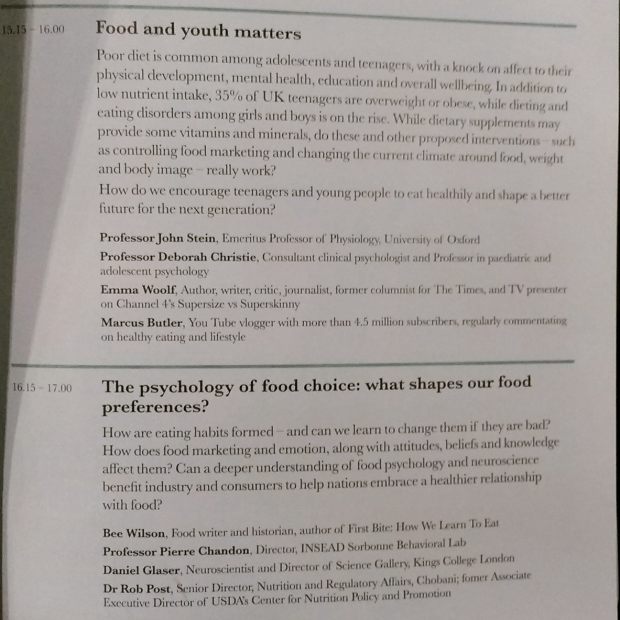
A busy but great day in the nutrition world! I love going to conferences as I get to hear new and exciting things happening in nutrition, potential career areas and learn new things. It reinforces why I am so passionate about nutrition.
More blog posts to come with more about what was talked about in the presentations/discussions.
Waiting in kings cross for my train home meant for a Leon meal for dinner as a hot nourishing meal was what I needed to sustain my journey back. Food on the go doesn’t have to be unhealthy!
